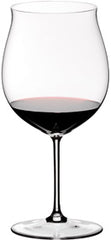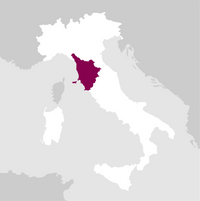Description
In 1997 we purchased and replanted the Montebuoni vineyards of 14.50 hectares, a beautiful estate bordering the Bellavista vineyard. Since its planting, the vineyard has been managed according to a protocol based on the 3 pillars of sustainability: economic, environmental and social. With the 2018 vintage comes Castello di Ama Montebuoni, an exclusive Chianti Classico wine, the fruit of grapes from the vineyard of the same name integrated with other Sangiovese from the estate, which meets the quality requirements typical of all Castello di Ama wines.
Awards
Details

Perfume

Color

Taste
Serve at:
16 - 18 °C.
Longevity:
10 - 15 years
Decanting time:
1 hour

Pairings
- Start up year: 1976
- Oenologist: Marco Pallanti
- Bottles produced: 320.000
- Hectares: 75
To date, Castello di Ama owns and manages about 75 hectares of vineyards and 40 hectares of olive groves, relying on the work of more than 60 people. The role of general manager and oenologist is held continuously by Marco Pallanti, who served, between 2006 and 2012, as President of the Chianti Classico Consortium, bringing the contribution of the creation of the 'Gran Selezione' category with the aim of highlighting the extraordinary quality and diversity of the region's wines. Read more


| Name | Castello di Ama Chianti Classico Montebuoni Riserva 2020 |
|---|---|
| Type | Red green still dry |
| Denomination | Chianti Classico DOCG |
| Vintage | 2020 |
| Size | 0,75 l |
| Alcohol content | 13.5% by volume |
| Grape varieties | 95% Sangiovese, 5% Merlot |
| Country | Italy |
| Region | Tuscany |
| Vendor | Castello di Ama |
| Origin | Gaiole in Chianti (Siena). |
| Climate | Altitude: 420-500 m a.s.l. Exposure: Northwest/Southeast. |
| Soil composition | Clay-limestone. |
| Cultivation system | Vertical espalier with simple Guyot for Merlot, spurred cordon for Sangiovese. |
| Plants per hectare | 5,200 |
| Wine making | The must was vinified in stainless steel tanks with the help of indigenous yeasts. Careful control of the fermentation temperature, which never exceeded 28-30 °C, and frequent manual pumping over gave this wine a beautiful ruby colour and distinct varietal aromas of the terroir. Maceration in contact with the skins for about 24 days, at the end of which the autochthonous bacteria developed the malic acid transformation. |
| Aging | Once malolactic fermentation was complete, the wine was put into second-passage French oak barriques, without using new wood. Refinement continued for about 12 months. |
| Total acidity | 5.2 gr/L |
| Dry extract | 30.2 gr/L |
| Allergens | Contains sulphites |










